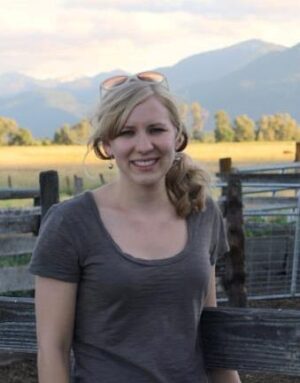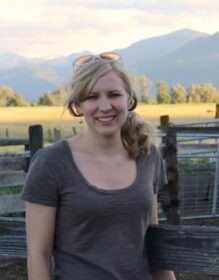“Problem” Groups and the Home in Western Reconstruction: A Q&A with Nicole Martin, winner of the WHA’s 2025 Ray Allen Billington Prize

Who has the right to possess a home? What counts as a home? And must you have a home to be an American citizen? Americans grappled with these questions in the years after the Civil War—a period historians call “Reconstruction.” Historian Nicole Martin explores how ideas of home became a moral blueprint deciding who could be included in the American nation as it expanded westwards in the wake of slavery’s defeat. She finds that home became a powerful marker of American identity and a key measure deciding national belonging for three western groups: Native Americans, Chinese immigrants, and Mormons. While historians have tended to treat these groups separately, Martin reveals how politicians, social reformers, and cultural commenters discussed these three groups together as “problems” to be solved and looked to an idealized vision of home for answers.
Martin’s article, “The Indian, Chinese, and Mormon Questions: The American Home and Reconstruction Politics in the West,” appeared in Pacific Historical Review’s special issue on Feminist Histories. Martin’s article was awarded the 2025 Ray Allen Billington prize for the best article in the field of western history from the Western History Association.
How did you come to this topic?
I’ve always been interested in the powerful stories and myths Americans have told themselves about western expansion and homesteading, especially in the post-Civil War era. When looking through sources from the second half of the nineteenth century—everything from diaries to published novels to congressional papers—I kept seeing one word over and over again: home. Nineteenth-century Americans, from all walks of life, were simply obsessed with the idea of home. This led me to the question: what counted as a home? When trying to answer this question, I realized what counted as a home was fundamentally tied up with these major debates American politicians and various cultural authorities were having about historically marginalized groups, particularly Native Americans, Chinese immigrants, and Mormons.
How so?
Well, in the wake of the Civil War, a Northern vision of home won out over Southern visions of home based on slave labor. According to the North, an ideal home was a single-family domicile supported by the free labor of a male breadwinner and lovingly run by a wife and mother raising the next generation of American citizens. The western homestead supported by the Homestead Act became central to this vision, which was really at the heart of Reconstruction policy. Politicians promoted homesteading as a way for any American family to attain the ideal of a single-family home while also believing the expansion of American homes westwards would help heal the nation from the disunion of the Civil War. However, this same western expansion brought the home face to face with western populations that the American nation had not yet fully incorporated and who made homes in ways that did not always perfectly fit with or interfered with Reconstruction’s vision of home. These other ways of making homes, whether real or perceived, challenged and refined definitions of what should count as an American home.
What did you learn that was surprising?
I was surprised at how often the sources I was looking at talked about these groups together or made comparisons between them. Each group was labeled a problem needing to be solved and was talked about as a question, such as the “Indian Question,” “Chinese Question,” and “Mormon Question.” Normally, historians have treated these questions separately, as they each have their own unique history. Even more surprising, however, was how strikingly similar the arguments politicians and commenters were making about the groups were. The arguments became so predictable it was almost like I was reading a script. While the details were wide ranging, the arguments kept boiling down to how these groups supposedly failed to make proper American homes, how they appeared to threaten good white homes, and the belief that they possessed land or space that would be better served by proper American homes. The “question” being posed about each group, I realized, was the same: who had the right to possess homes and, by extension, American citizenship.
The answer differed for each group but in each case, arguments about the home were used to exclude or force assimilation, often violently. The concept of home is so ubiquitous but also deeply personal, I think it is easy to miss how it has also acted, at times, as a blunt political tool.
Do you see parallels with the role the home plays today?
The ideal home has changed significantly since the late nineteenth century, particularly the role of women within the home. But owning a single-family home remains central to the American Dream, even as that dream becomes increasingly impossible. Ideas about whether certain groups can make what those with cultural and political power define as a proper home, or whether their presence is perceived as threatening white homes and neighborhoods, continue to shape arguments about allowing people to enter or stay in the national fold. While we might not be obsessed with the home to the same degree, it is still a measure testing fitness for belonging.

We invite you to read Nicole Martin’s award-winning article, “The Indian, Chinese, and Mormon Questions: The American Home and Reconstruction Politics in the West,” for free online for a limited time.
Print copies of PHR's "Feminist Histories" special issue (issue 93.3), in which the article appears, as well as other individual issues of PHR, can be purchased on the journal’s site.
For ongoing access to PHR, please ask your librarian to subscribe and/or purchase an individual subscription.
We publish PHR in partnership with the Pacific Coast Branch of the American Historical Association.
